Abstract
The potential for Crassulacean acid metabolism (CAM) was investigated in the sandstone outcrop succulent Talinum calycinum in central Kansas. Field studies revealed CAM-like diurnal acid fluctuations in these plants. These fluctuations persisted under all moisture and temperature regimes in the laboratory. Despite this CAM-like acid metabolism, simultaneous gravimetric determinations of day- and nighttime transpiration rates indicated the presence of a C3 gas exchange pattern. Subsequent analyses of diurnal CO2 and H2O exchange patterns under well-watered conditions and after 3, 5, and 7 days of drought confirmed these findings, though low rates of nocturnal CO2 uptake were observed on the fifth night after continuous drought. Finally, the δ13C/12C value of this succulent, −27.8‰, emphasizes the insignificance of any nocturnal CO2 uptake in the lifelong accumulation of carbon in this species. Thus, it is proposed that T. calycinum is a C3 plant with some CAM characteristics, including the ability to re-fix respiratory CO2 at night under all moisture regimes, potentially resulting in a conservation of carbon, and occasionally to fix atmospheric CO2 at night. These findings may prove to be common among rock outcrop succulents.
Full text
PDF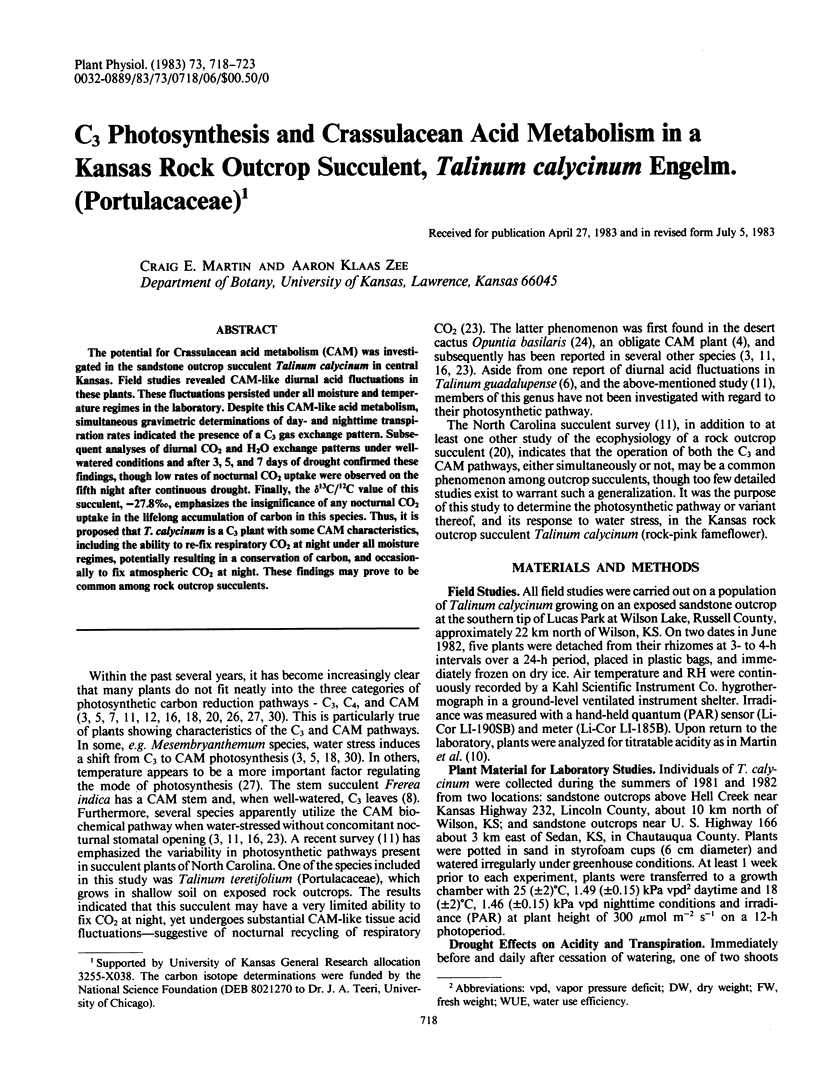
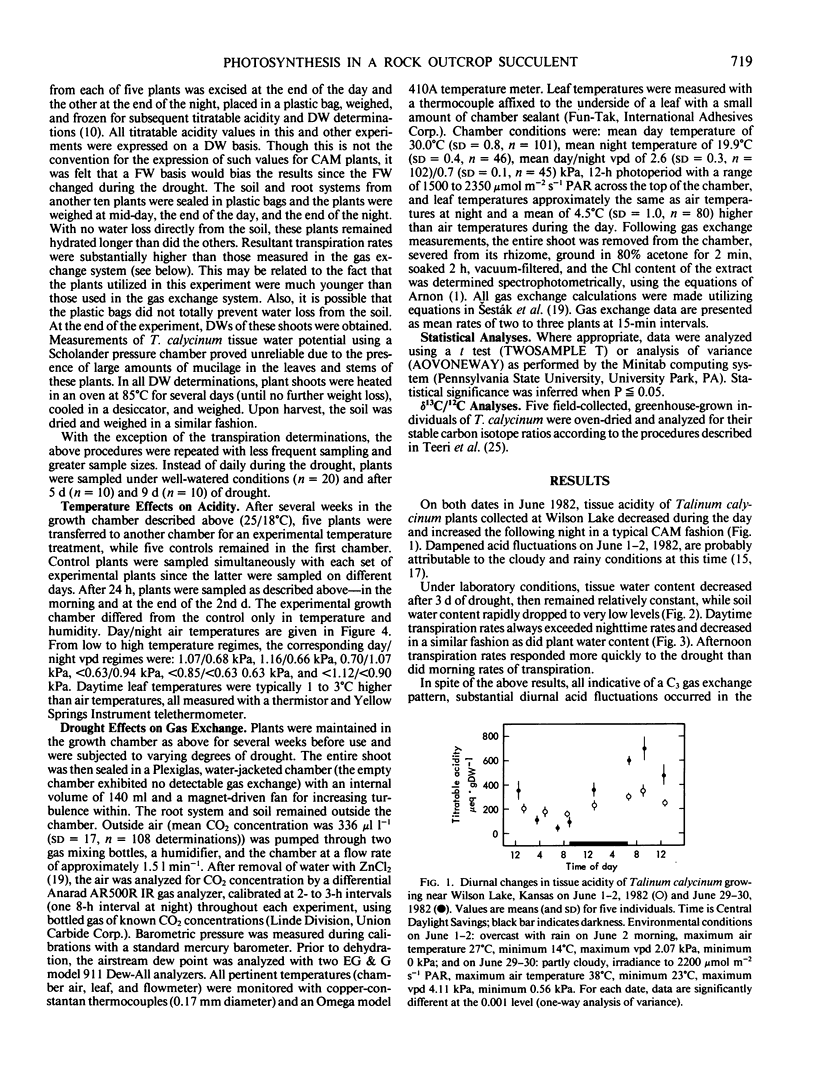
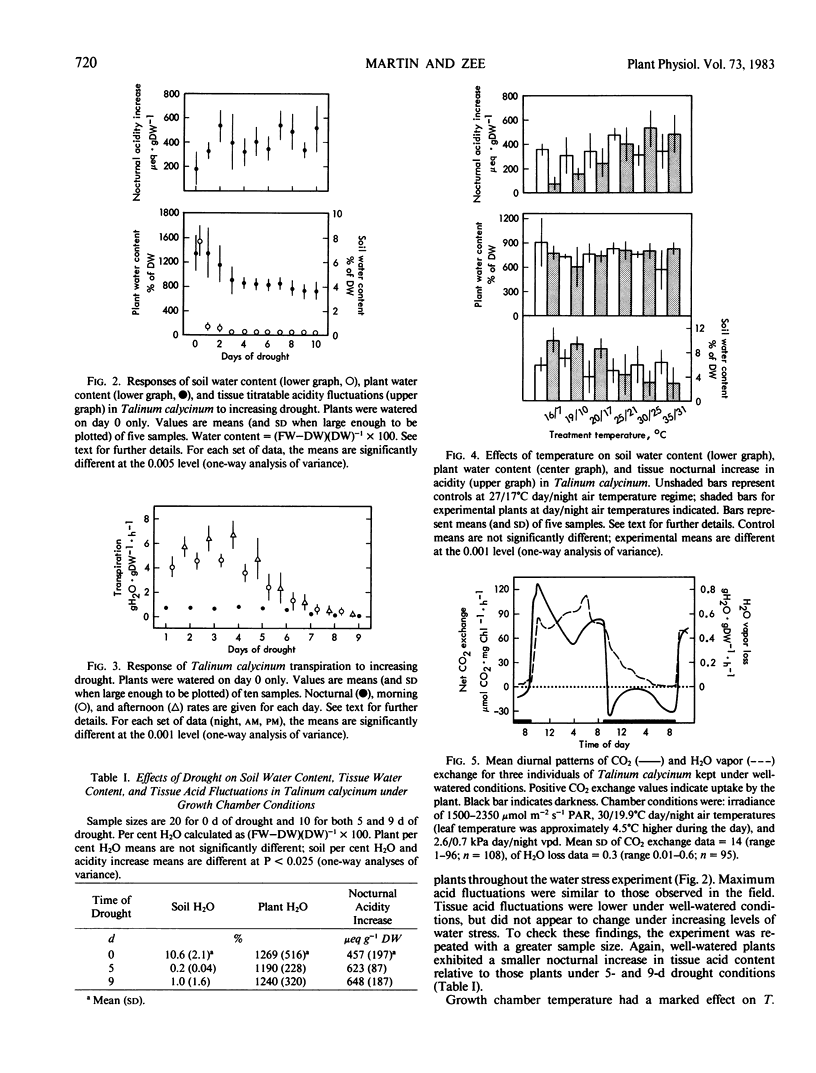
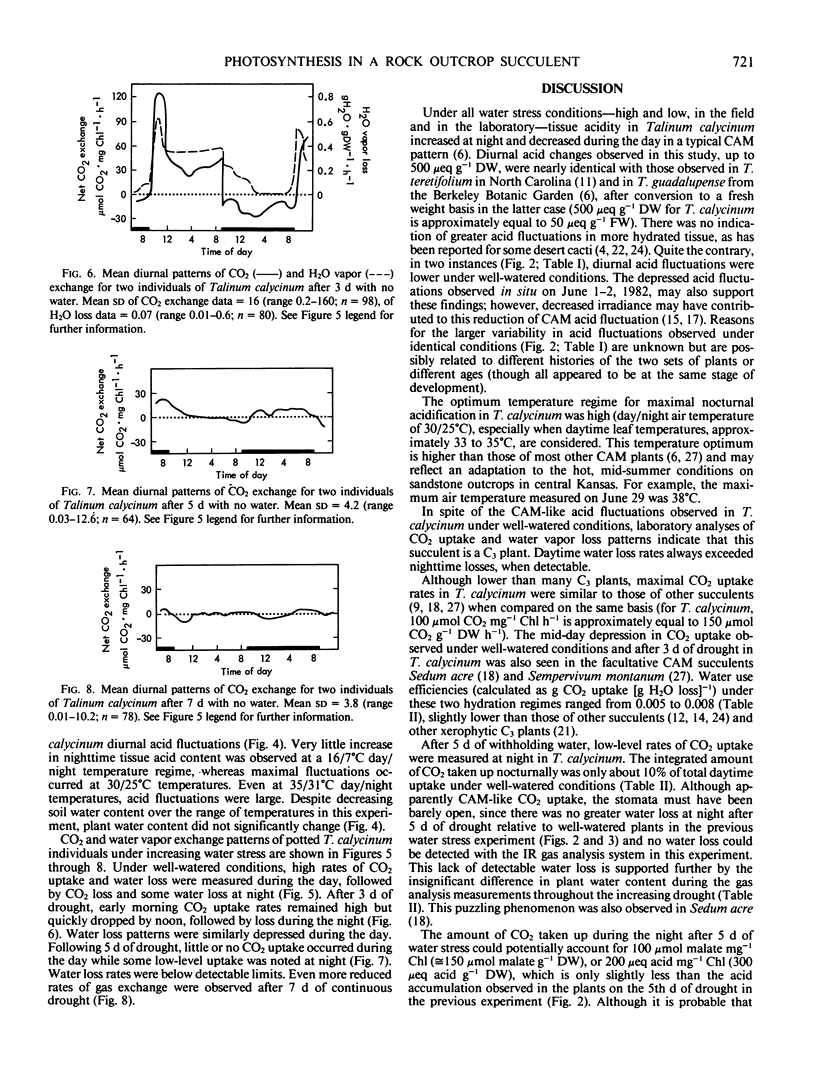
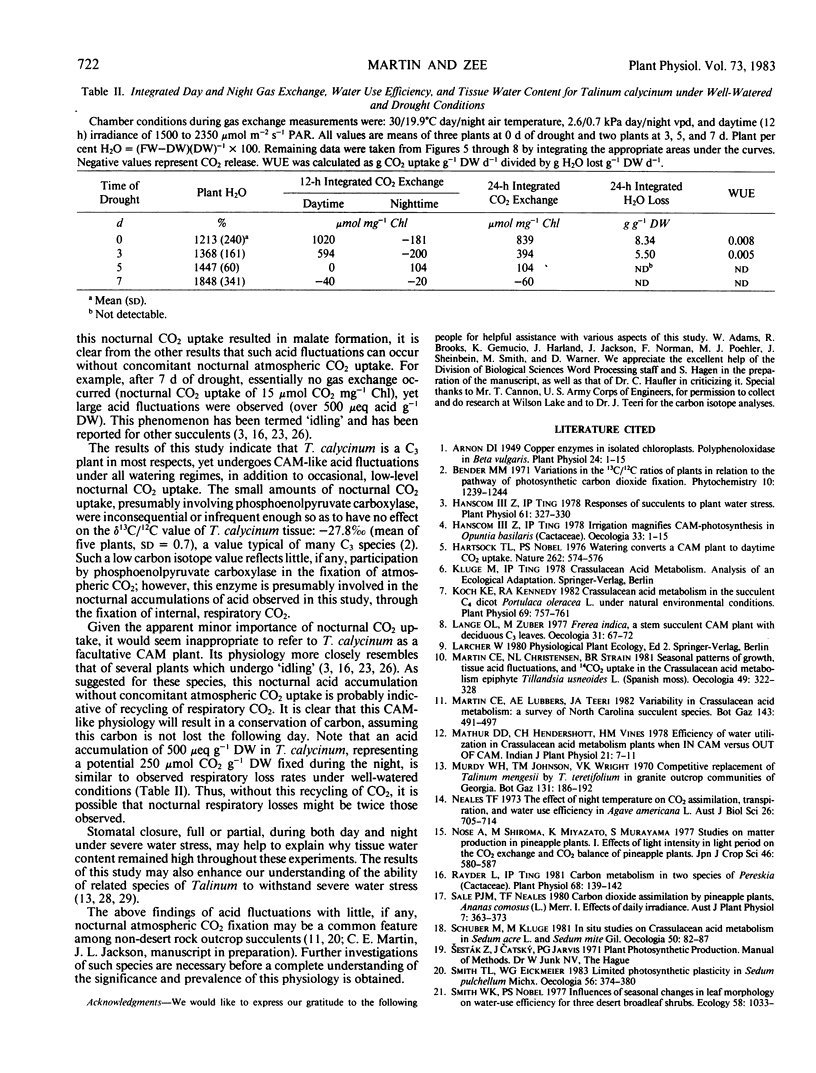

Selected References
These references are in PubMed. This may not be the complete list of references from this article.
- Arnon D. I. COPPER ENZYMES IN ISOLATED CHLOROPLASTS. POLYPHENOLOXIDASE IN BETA VULGARIS. Plant Physiol. 1949 Jan;24(1):1–15. doi: 10.1104/pp.24.1.1. [DOI] [PMC free article] [PubMed] [Google Scholar]
- Hanscom Z., Ting I. P. Responses of succulents to plant water stress. Plant Physiol. 1978 Mar;61(3):327–330. doi: 10.1104/pp.61.3.327. [DOI] [PMC free article] [PubMed] [Google Scholar]
- Koch K. E., Kennedy R. A. Crassulacean Acid Metabolism in the Succulent C(4) Dicot, Portulaca oleracea L Under Natural Environmental Conditions. Plant Physiol. 1982 Apr;69(4):757–761. doi: 10.1104/pp.69.4.757. [DOI] [PMC free article] [PubMed] [Google Scholar]
- Rayder L., Ting I. P. Carbon metabolism in two species of pereskia (cactaceae). Plant Physiol. 1981 Jul;68(1):139–142. doi: 10.1104/pp.68.1.139. [DOI] [PMC free article] [PubMed] [Google Scholar]
- Szarek S. R., Johnson H. B., Ting I. P. Drought Adaptation in Opuntia basilaris: Significance of Recycling Carbon through Crassulacean Acid Metabolism. Plant Physiol. 1973 Dec;52(6):539–541. doi: 10.1104/pp.52.6.539. [DOI] [PMC free article] [PubMed] [Google Scholar]
- Szarek S. R., Ting I. P. Seasonal Patterns of Acid Metabolism and Gas Exchange in Opuntia basilaris. Plant Physiol. 1974 Jul;54(1):76–81. doi: 10.1104/pp.54.1.76. [DOI] [PMC free article] [PubMed] [Google Scholar]
- Ting I. P., Hanscom Z. Induction of Acid Metabolism in Portulacaria afra. Plant Physiol. 1977 Mar;59(3):511–514. doi: 10.1104/pp.59.3.511. [DOI] [PMC free article] [PubMed] [Google Scholar]
- Zhang W. G. A new method for calculating the absorption amount of drug. Sci Sin B. 1983 Apr;26(4):374–380. [PubMed] [Google Scholar]


